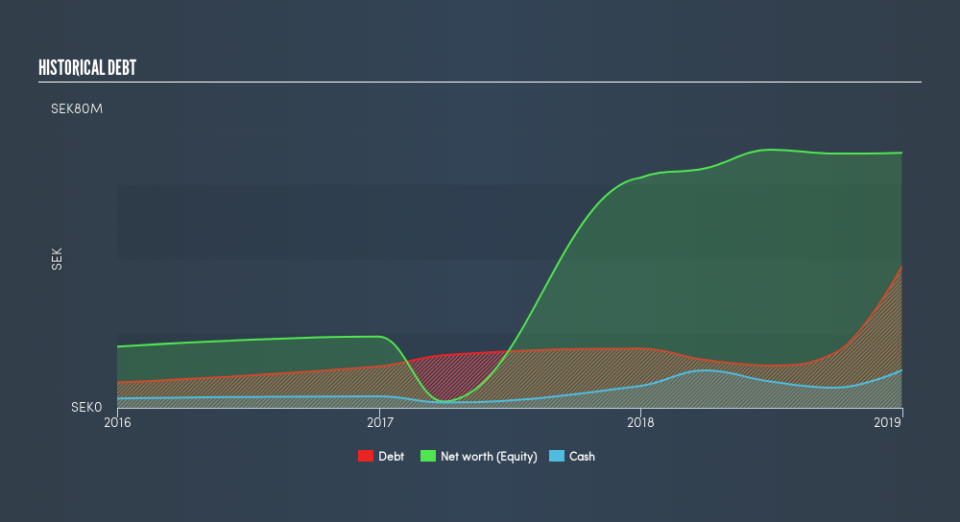You Might Like TCECUR Sweden AB (publ) (STO:TCC) But Do You Like Its Debt?

Investors are always looking for growth in small-cap stocks like TCECUR Sweden AB (publ) (STO:TCC), with a market cap of kr105m. However, an important fact which most ignore is: how financially healthy is the business? Since TCC is loss-making right now, it’s essential to evaluate the current state of its operations and pathway to profitability. The following basic checks can help you get a picture of the company's balance sheet strength. However, potential investors would need to take a closer look, and I’d encourage you to dig deeper yourself into TCC here.
TCC’s Debt (And Cash Flows)
TCC has built up its total debt levels in the last twelve months, from kr16m to kr38m , which accounts for long term debt. With this rise in debt, TCC's cash and short-term investments stands at kr10m to keep the business going. On top of this, TCC has generated kr5.9m in operating cash flow during the same period of time, resulting in an operating cash to total debt ratio of 16%, meaning that TCC’s current level of operating cash is not high enough to cover debt.
Can TCC meet its short-term obligations with the cash in hand?
With current liabilities at kr71m, it seems that the business arguably has a rather low level of current assets relative its obligations, with the current ratio last standing at 0.86x. The current ratio is calculated by dividing current assets by current liabilities.
Does TCC face the risk of succumbing to its debt-load?
TCC is a relatively highly levered company with a debt-to-equity of 55%. This is a bit unusual for a small-cap stock, since they generally have a harder time borrowing than large more established companies. But since TCC is currently unprofitable, there’s a question of sustainability of its current operations. Running high debt, while not yet making money, can be risky in unexpected downturns as liquidity may dry up, making it hard to operate.
Next Steps:
TCC’s high cash coverage means that, although its debt levels are high, the company is able to utilise its borrowings efficiently in order to generate cash flow. However, its lack of liquidity raises questions over current asset management practices for the small-cap. This is only a rough assessment of financial health, and I'm sure TCC has company-specific issues impacting its capital structure decisions. You should continue to research TCECUR Sweden to get a more holistic view of the stock by looking at:
Valuation: What is TCC worth today? Is the stock undervalued, even when its growth outlook is factored into its intrinsic value? The intrinsic value infographic in our free research report helps visualize whether TCC is currently mispriced by the market.
Historical Performance: What has TCC's returns been like over the past? Go into more detail in the past track record analysis and take a look at the free visual representations of our analysis for more clarity.
Other High-Performing Stocks: Are there other stocks that provide better prospects with proven track records? Explore our free list of these great stocks here.
We aim to bring you long-term focused research analysis driven by fundamental data. Note that our analysis may not factor in the latest price-sensitive company announcements or qualitative material.
If you spot an error that warrants correction, please contact the editor at editorial-team@simplywallst.com. This article by Simply Wall St is general in nature. It does not constitute a recommendation to buy or sell any stock, and does not take account of your objectives, or your financial situation. Simply Wall St has no position in the stocks mentioned. Thank you for reading.


